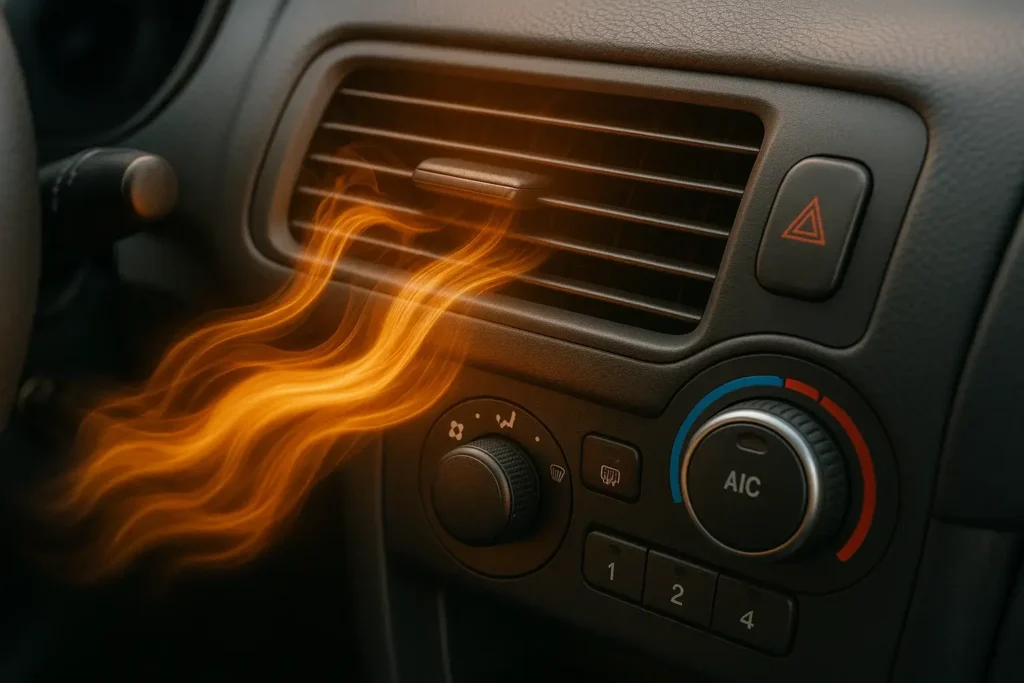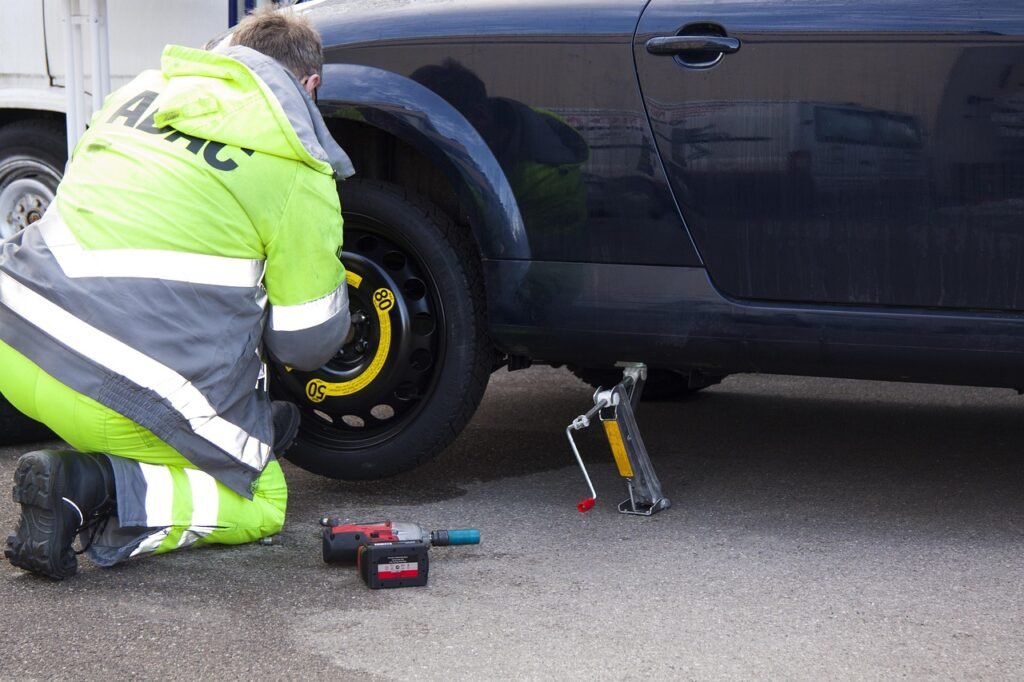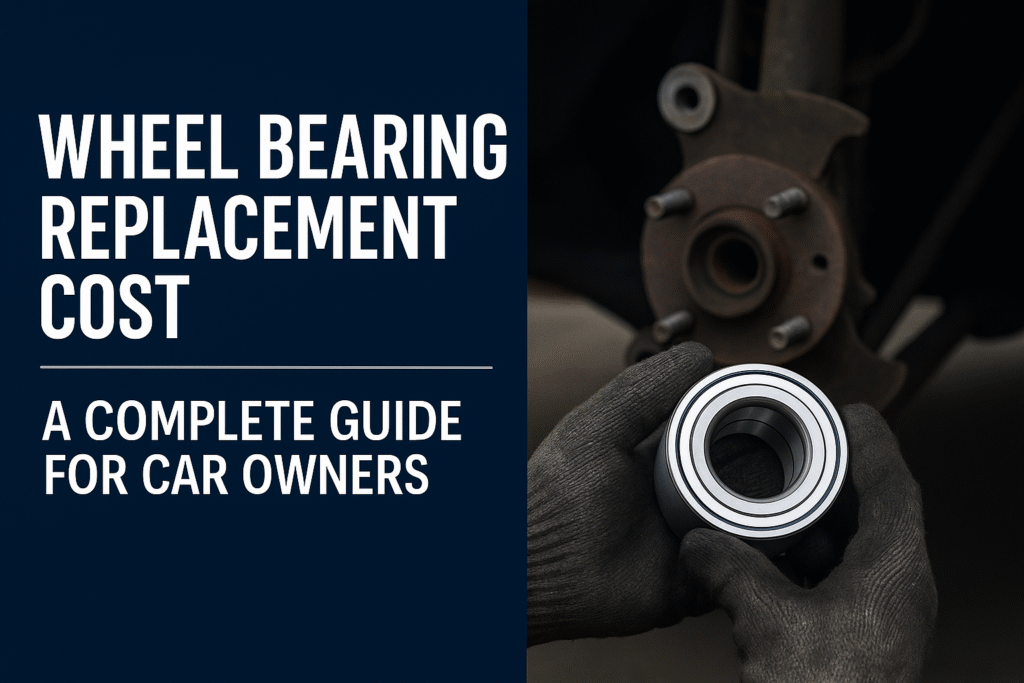It’s a blazing summer afternoon, and you crank up the AC, expecting a wave of refreshing cold air. Instead? You’re hit with a blast of hot air. Frustrating, right? A car AC blowing hot air isn’t just uncomfortable.
It can signal deeper issues under the hood. Whether you’re stuck in traffic or prepping for a road trip, knowing how to diagnose and fix the problem quickly can save you time, money, and sweat.
This guide walks you through the most common reasons your car’s AC might be blowing hot, how to troubleshoot it yourself, what repairs to expect, and when it’s time to call a pro.
Top Reasons Why Your Car AC Is Blowing Hot Air
Understanding why your AC is acting up is the first step to fixing it. Here are the most common culprits:
1. Low or Leaking Refrigerant
Refrigerant (often R-134a or R-1234yf in modern cars) is what cools the air. If it’s low or leaking, your AC can’t do its job.
Symptoms:
- Warm air from vents
- Hissing sound near AC lines
- Oily residue on AC components
Common Causes:
- Leaky hoses
- Worn O-rings
- Damaged condenser or evaporator
Pro Tip: Even a small leak can empty your refrigerant over time. If you’re recharging your AC every few months, there’s likely a hidden leak.
2. Faulty Compressor
The compressor is the heart of your AC system, circulating refrigerant under pressure. If it fails, your AC system can’t cool the air.
Symptoms:
- Clicking or grinding noise when AC is on
- AC clutch not engaging
- No cold air even after recharge
Possible Issues:
- Electrical failure
- Seized bearings
- Clutch problems

3. Electrical or Sensor Problems
Modern vehicles rely on sensors and relays to control the AC system. A blown fuse or faulty temperature sensor can prevent the system from working correctly.
What to Check:
- AC fuse (check your owner’s manual for location)
- Pressure switches
- Ambient air temperature sensor
4. Clogged or Broken Condenser
The condenser cools the refrigerant after it’s compressed. If it’s clogged with debris or broken, heat can’t escape.
Symptoms:
- Overheating when AC is on
- Poor cooling at idle or in traffic
- Visible damage or blockage in front of the radiator
5. Blend Door Actuator Malfunction
Your car uses a blend door to switch between hot and cold air. If the blend door actuator fails, it may get stuck in the heat-only position.
Clues to Look For:
- Heat only from one side of the cabin
- Clicking sound behind dashboard
- Inconsistent temperatures
Step-by-Step Diagnostic Guide
Want to try troubleshooting the issue yourself before heading to the mechanic? Here’s a practical checklist:
1: Check the Temperature Settings
- Make sure AC is on, set to cold, and fan is blowing.
- Try switching between hot and cold to see if the air changes temperature.
2: Inspect the AC Compressor
- With the engine running and AC on, pop the hood.
- Check if the AC clutch is engaging (you should see and hear it click).
- If not, could be a fuse, low refrigerant, or a compressor issue.
3: Look for Visible Leaks
- Look for oily residue near AC lines, condenser, or compressor.
- Use a UV dye kit or electronic leak detector for more accuracy.
4: Test the Fuses and Relays
- Use a fuse tester or multimeter to check the AC fuse.
- Replace blown fuses with the same amperage.
5: Try a Refrigerant Recharge (Cautiously)
- Use an AC recharge kit with a pressure gauge.
- If pressure is low and you recharge it but the cold air only lasts a few days, you’ve got a leak.
Important: Overcharging your AC can damage the compressor. Follow the gauge recommendations closely.
Common Repairs and Estimated Costs
| Problem | Typical Repair | Estimated Cost (USD) | DIY Difficulty |
|---|---|---|---|
| Low refrigerant | Recharge with leak check | $100–$300 | Easy–Moderate |
| Leaking hose or seal | Replace part and recharge | $150–$500 | Moderate |
| Faulty compressor | Replace compressor | $500–$1,200 | Advanced |
| Broken blend door actuator | Replace actuator | $200–$600 | Moderate |
| Clogged condenser | Clean or replace | $150–$700 | Moderate |
| Electrical issues | Replace fuse/sensor | $50–$250 | Easy–Moderate |
Tip: Many auto parts stores offer free AC checks, which can help identify basic issues before you spend on diagnostics.
When to Seek Professional Help
If you’ve tried basic troubleshooting and your car AC is still blowing hot air, it’s time to bring in a qualified mechanic—especially if:
- You suspect a refrigerant leak but can’t find it
- The compressor isn’t engaging at all
- Electrical diagnostics are beyond your comfort level
- You’re seeing coolant/AC fluid under your car
An ASE-certified technician can perform a full AC system diagnostic, often using specialized tools and refrigerant recovery machines.
Preventative Maintenance Tips
Keeping your car’s AC running cold for years to come is easier than you think:
- Run the AC regularly, even in winter, to keep seals lubricated.
- Change the cabin air filter every 12,000–15,000 miles.
- Inspect AC lines and components during oil changes.
- Recharge refrigerant proactively every few years if performance drops.
- Park in the shade to reduce AC workload.
Bonus Tip: Use your vehicle’s “recirculation” mode to cool the cabin faster and reduce humidity.
Final Thoughts
A car AC blowing hot air isn’t just a nuisance it’s your car’s way of telling you something needs attention. Whether it’s a simple fuse or a more serious compressor issue, catching the problem early can save you money and discomfort.
Take the time to troubleshoot wisely, fix what you can, and know when to bring in the pros. You and your passengers deserve a cool, comfortable ride.
FAQs
Can low refrigerant cause the AC to blow hot air?
Absolutely. If refrigerant levels drop too low, the system won’t cycle properly, and the compressor may not even engage.
Is it safe to drive with my AC blowing hot air?
Yes, but it's uncomfortable and may point to bigger issues (like a failing compressor or electrical fault) that can get worse over time.
How often should I recharge my car's AC?
Ideally, not very often. If your AC needs a recharge more than once every few years, there’s likely a leak that needs repair.
Can I recharge the AC myself?
Yes, with a DIY recharge kit, but it’s not a long-term fix if there’s a leak. Also, be cautious not to overfill the system.



